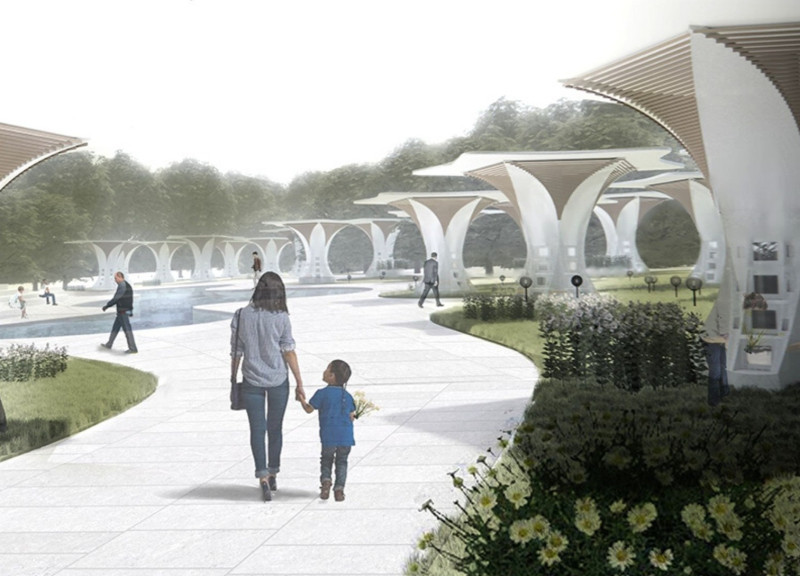5 key facts about this project
The design revolves around Darwin's Tree of Life theory, which highlights the connections between all living beings. Set within a peaceful forest area, the project acts as a memorial where visitors can reflect on their ancestors and the ties that bind them to nature. The theme resonates with Latvian cultural traditions, where the forest serves as a sacred place for contemplation, creating an environment that nurtures personal connections and spiritual reflection.
Materiality
The structure uses cast-in-place concrete forms with a white finish that is polished and smooth. This choice offers both stability and a calming atmosphere, enhancing the overall experience. Inside, the niches are lined with white granite, contributing to a respectful environment for remembrance.
Cedar benches are included in the design, attached securely to the concrete forms. These benches provide spots for visitors to rest and reflect. Additionally, there are embedded pockets within the concrete for candle placement, allowing people to honor their loved ones through personal rituals.
Structural Integrity
To ensure the design's stability, galvanized steel bearing plates and hollow structural sections are integrated. These elements create strong connections between different parts of the structure, supporting the concrete and benches effectively. Cedar slats are placed between curved PVC panels, adding visual interest and fostering ongoing interaction between the natural surroundings and the built environment.
Lighting and Engagement
Warm-toned spotlights are used to illuminate the area, making it welcoming at night. The lightweight hollow core PVC covering keeps the structural load manageable while maintaining a fluid design. An exterior ledge for flowers invites visitors to connect with the memorial more personally, creating a space for individual expression.
The design brings together natural and constructed elements, encouraging moments of quiet reflection and respect for ancestry in a tranquil forest setting.






















































